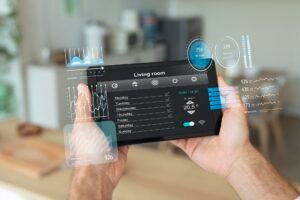As industrial utilities embrace digital transformation, smart water management systems are becoming increasingly vital for optimizing efficiency, reducing waste, and ensuring regulatory compliance. However, this digital shift also introduces new cybersecurity risks that could compromise water quality, disrupt operations, and expose sensitive data. Addressing these risks is critical for safeguarding industrial utilities and maintaining resilience against cyber threats.
The Cyber Threat Landscape in Smart Water Management
Industrial water utilities rely on interconnected systems, including Supervisory Control and Data Acquisition (SCADA), Industrial Control Systems (ICS), and Internet of Things (IoT) devices, to monitor and control water treatment and distribution. While these technologies offer significant advantages, they also present attack surfaces that cybercriminals can exploit.
Key cyber threats include:
-
Ransomware Attacks: Targeting critical infrastructure, leading to operational shutdowns and financial losses.
-
Data Breaches: Compromising sensitive information such as treatment protocols, utility performance data, and customer records.
-
Remote Exploits: Unauthorized access to SCADA and ICS through exposed network vulnerabilities.
-
Supply Chain Attacks: Malicious software embedded in third-party vendor components, affecting system integrity.
-
Insider Threats: Unintentional or malicious actions by employees compromising cybersecurity measures.
Best Practices for Strengthening Cybersecurity
To mitigate these threats, industrial utilities must implement a robust cybersecurity framework tailored to smart water management. Key strategies include:
-
Network Segmentation: Isolate critical control systems from external networks to reduce attack vectors.
-
Regular Patch Management: Ensure timely updates to firmware, software, and security protocols to address known vulnerabilities.
-
Advanced Threat Detection: Deploy AI-driven monitoring tools to detect anomalies and potential cyber intrusions in real time.
-
Zero Trust Architecture (ZTA): Enforce strict access controls, verifying each user and device before granting permissions.
-
Employee Cyber Hygiene Training: Educate staff on identifying phishing attempts, secure password practices, and recognizing social engineering tactics.
-
Incident Response Planning: Develop a comprehensive cybersecurity incident response plan to minimize downtime and recover swiftly from attacks.
-
Vendor Risk Management: Establish strict cybersecurity requirements for third-party vendors supplying hardware and software solutions.
-
Compliance with Regulatory Standards: Adhere to industry frameworks such as NIST, IEC 62443, and AWWA cybersecurity guidance to ensure best practices.
The Future of Cybersecurity in Smart Water Management
As cyber threats evolve, industrial utilities must continuously adapt their cybersecurity strategies to stay ahead of emerging risks. Investing in cybersecurity innovation, such as blockchain for secure data transactions and AI-driven threat intelligence, will be essential in fortifying smart water management against future cyber threats.
Cybersecurity is no longer optional in smart water management—it’s a necessity. Industrial utilities must proactively strengthen their cyber defenses to safeguard critical infrastructure, ensure operational continuity, and protect public health. By adopting a comprehensive cybersecurity approach, the industry can embrace digital transformation with confidence, securing water management systems for the future.
Register to participate : Exhibitor | Delegate | Be a Speaker













